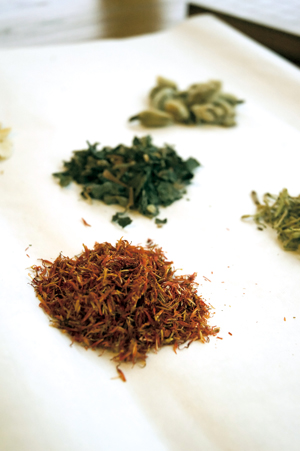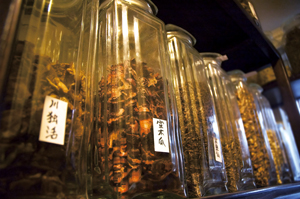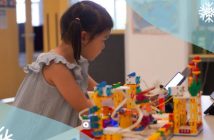 Like most natural therapies, Traditional Chinese Medicine, or TCM, is eyed with caution by many people. For the uninitiated, TCM is a holistic medical practice incorporating multiple treatments with a simple philosophy: Your body and mind are directly affected by your environment and vice versa.
Like most natural therapies, Traditional Chinese Medicine, or TCM, is eyed with caution by many people. For the uninitiated, TCM is a holistic medical practice incorporating multiple treatments with a simple philosophy: Your body and mind are directly affected by your environment and vice versa.
Developed in China by scholars more than 2,000 years ago, TCM has been left behind in recent decades. The radical modernization of China has pushed TCM and its traditional practitioners into relative obscurity. Though many TCM doctors are currently practicing both in China and around the world, very few practice this complicated art as it was intended. A report published by the World Health Organization (WHO) found serious flaws in the teaching of TCM and concluded that current graduates were essentially unfit to practice. In addition, many Western studies have analyzed the effectiveness of TCM, particularly in relation to the placebo effect, and the overall results have not been good.
A major hurdle to understanding TCM is the individualized nature of the treatments. For example, two patients will not receive the same prescription for a cough, unlike in Western medicine. The reason for one person’s cough can be totally different from another’s, therefore their treatments are unique.
One person may have a dry cough because she has yet to adjust to the Beijing winter. For her, the doctor may prescribe a combination of "wet" herbs to increase inner moisture. Someone else may have eaten too much dairy and developed a congested cough; this person may be prescribed decongestive herbs and told to lay off the cheese. In general, symptoms are viewed as signs of a larger problem rather than the problem itself.
At a glance, TCM is just as much about philosophy as it is about potions and lotions. Though modern TCM has evolved far from its roots, practitioners still refer to the 2,400-year-old text upon which its theories are based, The Yellow Emperor’s Classic of Internal Medicine. The first building block of TCM is qi, which loosely means energy. Illnesses are directly related to an excess, deficiency or blockage of qi inside the body. TCM also incorporates the five elements – metal, wood, water, fire and earth – into the diagnostic process. Each element is believed to interact and correspond with specific organs in the body. Finally, there is the notion of yin and yang, which must work in harmony in order to avoid illness.
TCM is made up of five major treatments: qigong (a form of meditative movement and exercise), herbal treatments, acupuncture, diet, and acupressure (a form of massage). The aim of any treatment is to ensure qi flows smoothly within the body and that all organs are working in harmony.
Acupuncture
Acupuncture is designed to correct the flow of qi throughout the body. Fine needles are inserted into specific points on the skin which then allows the qi to travel smoothly. As an indication of it’s acceptance by Western medical therapists, the US Food and Drug Administration recently removed acupuncture needles from the category of "experimental medical devices." The WHO showed acupuncture to be effective in treating headaches, hyper-tension, back and neck pain, sciatica pain and morning sickness among other conditions.

Moxibustion
According to The Meridian, a TCM spa supported by the Beijing University of Chinese Medicine and China Academy of Chinese Medical Science, moxibustion involves the burning of mugwort, a small, spongy herb, over the skin to encourage blood circulation and the flow of qi. It’s normally used in conjunction with acupuncture, in which case it’s referred to as direct moxibustion. Indirect moxibustion is when a stick of mugwort (often mixed with other herbs) is burnt directly over the skin without actually touching the surface. Moxibustion is particularly useful for patients who need to increase their "yang" – the male sun element referred to in the Taoist theory of yin and yang. People with low yang generally suffer from cold or stagnant constitutions represented by low blood pressure among other symptoms.
Cupping
Cupping is designed to improve blood flow and in-turn the flow of qi. A vacuum is created by heating the air inside the cups and placing them directly onto a patient’s skin. The skin is sucked up into the cup and blood is released to the surface. It’s used to treat respiratory diseases such as the common cold, pneumonia and bronchitis. The pressure of the suction often results in large bruises. Therapists at The Meridian believe the color of the bruising gives them important information about the patient. Pink marks mean the patient is cured; red marks mean there are signs of fever or disease; white marks indicate qi or blood loss; blue marks indicate poor blood circulation; and purple marks indicate that the patient is suffering from a long-term underlying illness.
Herbal Treatments
Literally thousands of herbs, plants and animals are used in TCM treatments, ranging from seahorses to green tea. A trained TCM specialist is able to make herbal mixtures specifically for each patient. No single herbal treatment should be the same. The Meridian offers a herbal bath treatment that combines more than 30 herbs, with every patient receiving their own personal formula. The herbs are absorbed through the skin and are designed to help treat a range of disorders including insomnia, arthritis, poor blood circulation and high blood pressure. Elisabeth Craddock
The Meridian
Daily 10am-11pm. 9-10-A, Si’de Park, Fangyuan Xilu, Dongsihuan, Chaoyang District (8456 7010) 朝阳区东四环芳园西路四得公园9-10-A



